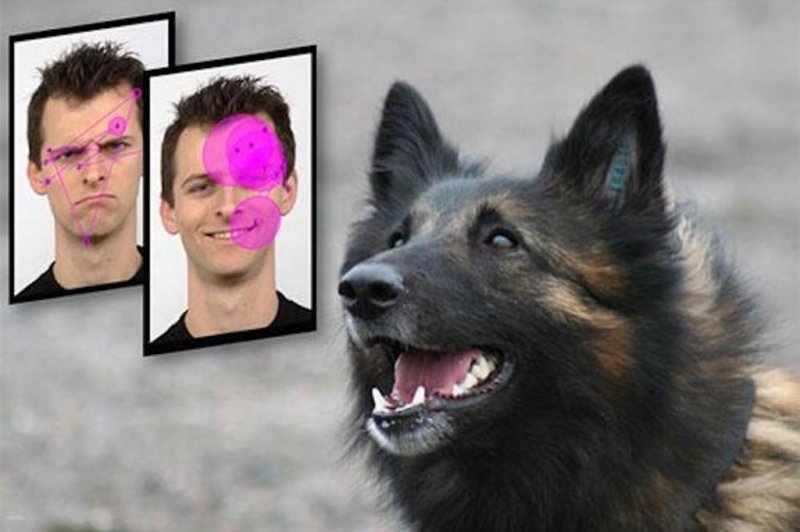The hormone oxytocin influenced how dogs react to different human faces. Photo by Sanni Somppi/University of Helsinki
Nov. 20 (UPI) -- A new study of dog-human interactions reveals the importance of the hormone oxytocin to social bonding.
On average, dogs tend to pay closer attention to potential threats than to friendly behavior. But those tendencies change when dogs are given doses of oxytocin, a neuropeptide that plays a role in social bonding and pair bonding among family members, friends and potential mates.
Scientists have mostly focused on the hormone's role among humans, specifically its impact on physiology and behavior of couples before and after having a baby.
In the latest study -- published this week in the journal Frontiers in Psychology -- researchers focused on the hormone's role in human-dog bonding.
"It seems that the hormone oxytocin influences what the dog sees and how it experiences the thing it sees," Sanni Somppi, a doctoral student at the University of Helsinki in Finland, said in a news release.
Researchers showed a few dozen dogs several pictures of either smiling or angry human faces on a computer screen. Half the dogs were given doses of oxytocin beforehand. Eye-tracking technology revealed how long the dogs looked at each face and how wide their pupils grew.
Attentiveness and emotion dictate a dog's pupil size, so eye-tracking not only reveals where a dog is looking but how attentive and emotionally engaged he or she is.
"We were among the first researchers in the world to use pupil measurements in the evaluation of dogs' emotional states," said lead researcher Outi Vainio, a professor at Helskini. "This method had previously only been used on humans and apes."
The scientists found dogs paid closer attention to smiling faces than angry faces when dosed with oxytocin. Dogs in the control group -- un-dosed dogs -- paid more attention to the angry faces.
The hormone, scientists hypothesized, made the smiling faces seem more appealing and the angry faces less threatening.
"Both effects promote dog-human communication and the development of affectionate relations," said Vainio.















